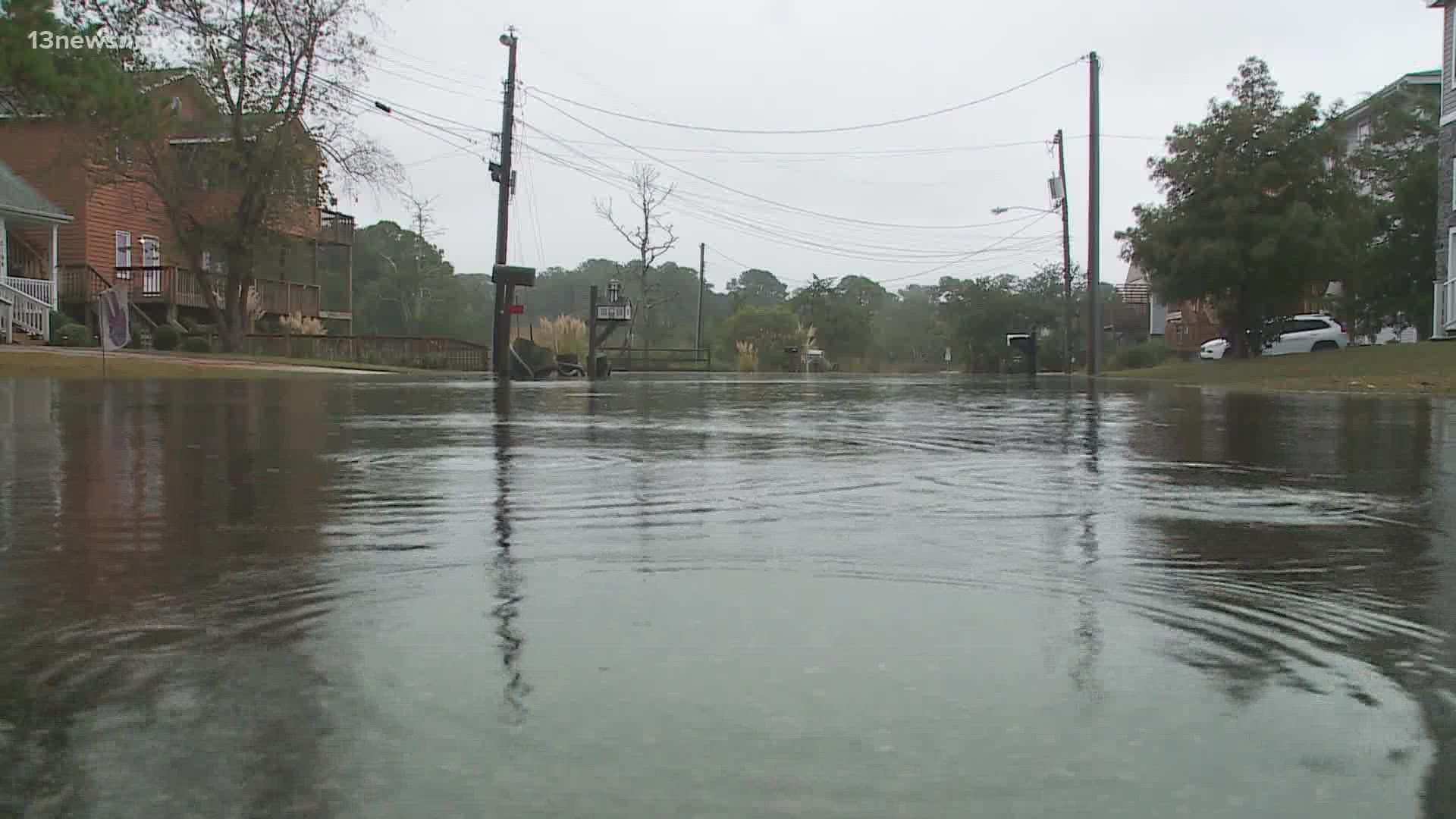VIRGINIA BEACH, Va. — The year 2050 may seem like a long ways-away now, but Don Bain knows by then, we should be able to see a much clearer idea of the impact of rising sea levels on the homes near our waters.
“Science-based qualities that people can relate to. In this case, it’s dollars and cents," Bain said.
A new report, "Sinking Tax Base" published by the organization Climate Central, investigated the impacts of coastal flooding across hundreds of localities and counties across the country, with the goal of accessing how rising sea levels could impact private land ownership.
Bain, a climate engineer with Climate Central, said the goal was to quantify the impacts of tidal changes into a medium the general public could understand.
According to the report, more than 600,000 parcels of land across the country may have "some elevation below the tidal boundary by 2050."
Over time, a changing tidal boundary could have an impact on a city's ability to tax a certain property, Bain said.
“Think of it as a line on the ground, on one side is private property and the other side is public tides and public waterways," he said.
By 2050, researchers estimate there could be as many as more than 40,000 land parcels across Virginia at least somewhat below the tidal boundary, making Virginia the fifth-highest state in the country behind North Carolina.
Virginia also ranked fourth highest in the number of land parcels that could be completely under a tidal boundary by that date, and sixth in terms of land area.
Across Hampton Roads, here are the land amounts at-risk and their assessed land value:
- Virginia Beach: 11,190 acres*
- Chesapeake: 4,922 acres at $59.36 million
- Norfolk: 178 acres at $48.81 million
- Newport News: 292 acres at $38.06 million
- Hampton: 290 acres at $22.36 million
- Suffolk: 292 acres at $9.92 million
- Portsmouth: 155 acres at $18.31 million
The land values are respectively based on that localities' tax base. Bain said the assessed land value data for Virginia Beach was not obtainable.
Bain said this information could impact how we look at real estate in coastal communities.
“With sea level rise, the line is moving, upslope and inland, and when it does, the line between private and public ownership moves with it," he said.

